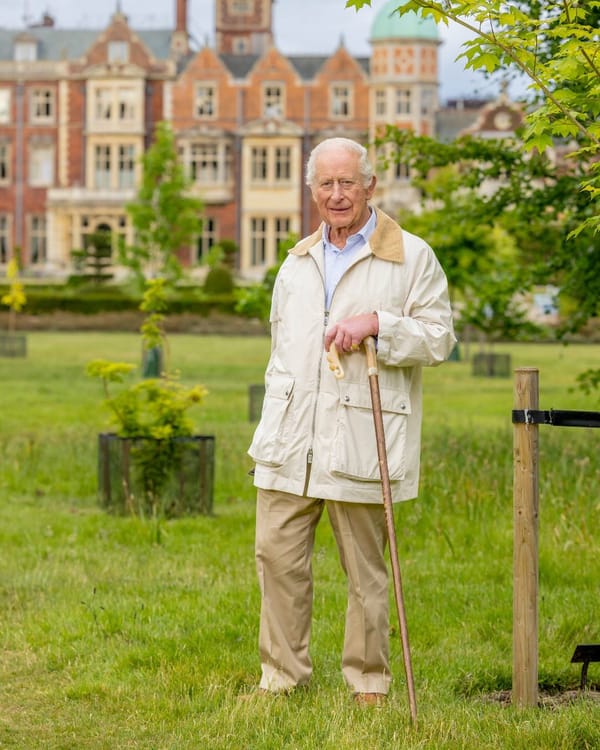Royal 101: Royal Dining Etiquette - Table Manners Fit for a King

The Art of Aristocratic Dining in the Modern Age
In the grand dining halls of Buckingham Palace, where crystal glasses catch the light of centuries-old chandeliers and silver cutlery gleams against pristine white tablecloths, every movement at the dinner table follows a carefully choreographed dance of etiquette that has evolved over hundreds of years. While most of us will never dine with royalty, understanding the principles of royal dining etiquette offers a fascinating glimpse into a world where tradition, precision, and social grace converge at the dinner table.
Royal dining etiquette isn't merely about knowing which fork to use—though that's certainly part of it. It represents a complex system of social codes that reflects hierarchy, respect, and the art of civilized conversation. These rules, refined over generations of state banquets and private royal dinners, continue to influence formal dining standards worldwide.
The Foundation: Setting and Seating
Before a single morsel of food is served, royal dining etiquette begins with the table setting and seating arrangement. In royal households, the table setting follows what's known as the "outside-in" rule—cutlery is arranged in the order of use, with the implements for the first course positioned furthest from the plate. A formal royal place setting might include up to twelve pieces of silverware, three glasses, and multiple plates, each with its specific purpose.
The placement of guests follows strict protocol based on rank and precedence. The most honored guest sits to the right of the host (traditionally the monarch), with the second most important guest to their left. This arrangement cascades down the table according to a complex hierarchy considering titles, positions, and diplomatic importance. Even family dinners follow precedence rules, with senior royals seated according to their place in the line of succession.
Name cards at royal dinners are handwritten in copperplate script, and guests must wait to be seated. No one sits until the Queen or King takes their seat, and similarly, everyone must rise when the monarch stands. This seemingly simple rule requires constant awareness throughout the meal.
The Silent Service: Understanding Royal Signals
One of the most intriguing aspects of royal dining is the system of silent signals used to communicate with staff and fellow diners. The Queen famously uses her handbag to send discrete messages to her staff—placed on the table signals she wishes to leave within five minutes, while on the floor indicates an immediate desire to depart.
At the table itself, cutlery placement serves as a language. Placing knife and fork together at the four o'clock position indicates you've finished eating, while resting them apart signals you're merely pausing. Crossing cutlery on the plate was once considered a sign that the food was unsatisfactory, though this practice has largely fallen out of use in modern royal dining.
The monarch sets the pace for the entire meal. When they stop eating, everyone stops eating. This rule has caught many unprepared guests off-guard, particularly slow eaters who find their plates whisked away half-finished once the royal host has completed their course. Queen Victoria was notorious for eating quickly, leaving many of her guests hungry after state dinners.
The Order of Service: Navigating Multiple Courses
A formal royal dinner can consist of up to seven courses, each with its own etiquette requirements. The traditional sequence begins with soup, followed by fish, meat, salad, dessert, cheese and crackers, and finally fruit. Between the main course and dessert, a palate-cleansing sorbet might be served.
Each course brings specific rules. Soup must be sipped from the side of the spoon, never the tip, and the spoon should be tilted away from you. The soup spoon never touches the bottom of the bowl—instead, it should skim the surface. When finished, the spoon rests on the service plate beneath the bowl, never in the bowl itself.
Fish courses require particular delicacy. In the most formal settings, fish knives and forks are used—the knife shaped more like a palette knife to separate the delicate flesh without cutting. Bones should be removed from the mouth with thumb and forefinger, discretely placed on the side of the plate.
The cheese course, served after dessert in the British tradition (unlike the French custom of serving it before), comes with its own protocol. Cheese should be cut maintaining the original shape—wedges from triangular cheeses, slices from round ones. Port wine, traditionally served with cheese, passes to the left around the table, and it's considered poor form to pour your own before ensuring your neighbors' glasses are filled.
Conversation and Conduct: The Social Symphony
Royal dining etiquette extends far beyond food consumption to encompass the entire social experience. The "turning of the table" is a peculiarly British royal tradition where, at a given signal (usually between the first and second courses), all guests simultaneously turn their conversation from one neighbor to the other, ensuring everyone engages in dialogue throughout the meal.
Topics of conversation follow unwritten rules. Politics, money, religion, and personal health are generally avoided. The weather, arts, travel, and current cultural events provide safer ground. One should never speak across the table or lean behind another guest to converse. Mobile phones, needless to say, are absolutely forbidden at royal tables—they shouldn't even be brought into the dining room.
Laughter should be moderate, never raucous. Elbows must remain off the table, though forearms may rest on the edge between courses. Napkins are placed on the lap immediately upon sitting, folded with the crease toward you, and used to dab the lips discretely before drinking to avoid marking the glasses.
The Tea Ceremony: Afternoon Traditions
No discussion of royal dining etiquette would be complete without addressing afternoon tea, that most British of institutions. The royal approach to tea service follows precise rules that have influenced tea etiquette worldwide. The cup handle should be held with thumb and index finger, with the middle finger supporting underneath—never hooked through the handle. When stirring, the spoon should move back and forth (12 o'clock to 6 o'clock) rather than in circles, avoiding any clinking against the china.
Milk, when taken, goes in after the tea—a practice that originated to demonstrate the quality of one's china, which could withstand hot tea without cracking. This "milk in first" versus "milk in last" debate once served as a subtle class indicator, with the upper classes traditionally adding milk last.
Sandwiches at afternoon tea should be eaten with fingers, not cutlery, while cakes and pastries require a fork. Scones—the centerpiece of any proper tea—present their own protocol. They should be broken apart by hand, never cut with a knife, and each piece spread with jam and cream just before eating rather than reassembling the scone.
Modern Adaptations: Royal Etiquette in Contemporary Context
While traditional royal dining etiquette remains largely unchanged for state occasions, the modern royal family has shown flexibility in less formal settings. Prince William and Catherine, Princess of Wales, are known for their more relaxed approach at charity dinners and informal gatherings, though they seamlessly shift to full protocol for state banquets.
The COVID-19 pandemic necessitated adaptations even in royal circles, with increased spacing between diners and modified service styles. However, the fundamental principles of grace, consideration for others, and attention to detail remain constant.
Contemporary royal dining also reflects increasing cultural sensitivity. Menus now regularly accommodate dietary restrictions and religious requirements, something unthinkable in Victorian times. Vegetarian options appear at state banquets, and protocol has adapted to respect the dining customs of international guests.
Practical Applications: Bringing Royal Standards Home
While few of us will ever need to know the exact protocol for dining with monarchs, many elements of royal dining etiquette can elevate our own dining experiences. The principle of making guests feel comfortable, the art of pacing a meal properly, and the importance of table presentation all translate to any formal dinner setting.
Key takeaways for formal dining include: always work from the outside in with cutlery, wait for everyone to be served before beginning, and follow your host's lead. Keep conversations inclusive and pleasant, phones away, and remember that good manners are ultimately about making those around you feel at ease.
The royal emphasis on posture—sitting straight with feet flat on the floor—not only looks elegant but aids digestion. The practice of placing cutlery correctly when finished helps service staff know when to clear plates. Even the royal custom of thanking staff can remind us to acknowledge those who serve us.
Conclusion: The Enduring Relevance of Royal Standards
Royal dining etiquette, with all its elaborate rules and subtle signals, might seem anachronistic in our casual age. Yet these protocols serve purposes beyond mere tradition. They create a framework for social interaction, ensure smooth service at large gatherings, and demonstrate respect for the occasion and fellow diners.
Moreover, understanding royal dining etiquette provides insight into British culture and history, revealing how social customs evolve while maintaining core principles of courtesy and consideration. Whether we're hosting a formal dinner party or simply wanting to feel more confident at business dinners, the lessons from royal dining etiquette—attention to detail, consideration for others, and the ability to make any meal feel like an occasion—remain remarkably relevant.
In an era of fast food and eating on the go, the royal approach to dining reminds us that sharing a meal can be more than mere sustenance—it can be an art form, a social ritual, and a celebration of civilization itself. While we may not need to master every nuance of royal protocol, embracing the underlying principles of grace, respect, and mindfulness at the table enriches our dining experiences and honors the timeless tradition of breaking bread together.




